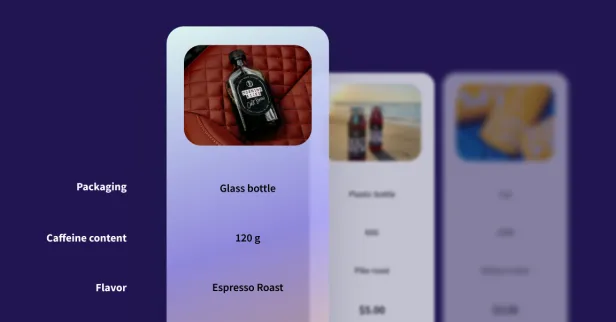We’ve all heard of emotional buying. Most of the time, the phrase refers to consumers who purchase something without rational decision making- instead basing their decision on some affection towards a product.
Surely you’ve heard the phrase: “it’s not wise to go food shopping on an empty stomach?”
At some level, any decision to consume has an element of emotion attached to it, however big or small the impact may be.
Two very core feelings we all experience when buying anything- from bubble gum to an iPhone- are hope and anxiety. What do you expect or desire for the outcome of making this purchase? Will the taste be everything you dreamed of? Are you apprehensive about how the product will perform or make you feel? Unlocking your phone using your face takes some getting used to, right?
When consumers are entertained using a new product that they haven’t tried before, it is typical that they experience varying degrees of hope and anxiety. Consequences from using a new product can range from negligible to life changing.
For example, a consumer might hope that purchasing noise-reducing shades may help her quiet the street sounds in her New York City apartment and subsequently help her sleep better. But she is anxious that the new shades won’t actually work in reducing the noise, and that they will end up being another expensive purchase that didn’t live up to its stated value.
When it comes to new product adoption, hope and anxiety are emotions that are integral to decisions about adopting a new product (Cohen, Pham, and Andrade 2008). They are different from other emotions because they are anticipatory in nature, which influences the future outcomes. They get invoked in response to potentially adopting a new product and have been shown to directly relate to consumers’ decisions about whether or not to adopt.
It can seem intuitive that a feeling of stronger anxiety might lead to lower chances of a purchase and a stronger feeling of hope will surely lead to adoption. But, in a study conducted by professors of marketing Drs. Lin, Maclnnis, and Eisingerich, made the counterintuitive argument and prediction that strong anxiety actually heightens new product adoption when hope is also strong.
They predicted that strong levels of hope coupled with strong levels of anxiety about a potential new purchase induces consumers to engage in a form of elaboration that they call “action planning”, which was defined as the use of knowledge for a purpose; the construction of an effective way to meet some future goal.
Accordingly, action planning will be greatest when both hope and anxiety are strongest, which are also linked to problem solving behaviors (Madore and Schacter, 2016). Furthermore, action planning was predicted to be weaker when hope is strong but anxiety is low.
In order to prove that, the researchers designed three separate studies: one in the field and two experiments that used different products and different consumer populations, while measuring and manipulating both hope and anxiety to understand cause and effect relationships between hope and anxiety across various controlled conditions.
The first study was a field study, in a real-world context, sponsored by the Bill & Melinda Gates Foundation of over 2,000 people. It involved the intentions of at-risk respondents’ (e.g. patients) from eight countries to adopt a real medication designed to protect individuals from contracting HIV. The results of the study indeed showed that the combination of strong hope and strong anxiety about outcomes from taking the medication led to a stronger intent to. adopt.
The second study was designed to see if these results would be replicated when using a different population with a different product and measuring actual behaviors rather than intentions. The design of this second study included 475 managers attending an executive education program, who consented to participate in a study about an extra strength skin treatment. The product claimed that it can produce balanced, clear, bright, and smooth skin. And interestingly, anxiety and hope levels were manipulated by exposing respondents to various social media comments
The findings of the study in a controlled lab replicated those of the first study conducted in the field. They supported the idea that new product adoption is greatest when hope and anxiety are both strong. They also suggested that strong levels of these emotions affect adoption intentions through mediation effects of action planning and perceived control over outcomes.
The third study was designed to replicate the results with a younger population and another product. This study researched 557 undergraduates about a new energy drink that promised mental clarity and physical energy. Again, both anxiety and hope were manipulated through online product reviews from other consumers. Once again, the same findings were replicated.
Do you know what your consumers are hopeful about? Or anxious about? Or maybe (more importantly) what they aren’t hopeful or anxious about?
As the researchers Lin, Maclnnis, and Eisingerich best put it in their conclusion..
“If market research reveals that consumers already have strong anxiety about outcomes from new product adoption, it would behoove marketers to develop communications that evoke strong hope rather than trying to downplay anxiety”.
